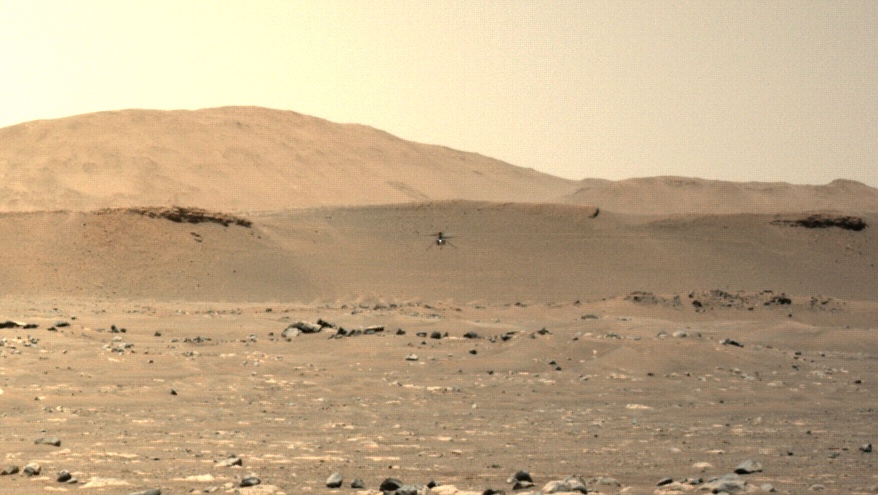Products You May Like
WASHINGTON — NASA’s Ingenuity helicopter performed its third flight on Mars April 25, setting it up for its final, and most challenging, tests.
Ingenuity took off from the Martian surface at 4:31 a.m. Eastern, going up to an altitude of five meters. It then flew 50 meters downrange and back before touching down 80 seconds after takeoff, according to data that arrived on Earth about six hours after the flight. The helicopter reached a top speed of two meters per second during the flight.
This flight, like the two previous ones April 19 and 22, went according to plan as controllers expanded Ingenuity’s flight envelope. On its first flight the helicopter went up three meters and back down, while on the second it went to an altitude of five meters, then went two meters sideways and back before landing.
[embedded content]
“Today’s flight was what we planned for, and yet it was nothing short of amazing,” Dave Lavery, program executive for the project at NASA Headquarters, said in a statement. “With this flight, we are demonstrating critical capabilities that will enable the addition of an aerial dimension to future Mars missions.”
One key aspect of the latest flight was to test the helicopter’s navigation system, which relies on a camera that looks down to track surface features. That system was tested on the ground, but in a vacuum chamber where the helicopter could move only about half a meter. “This is the first time we’ve seen the algorithm for the camera running over a long distance,” MiMi Aung, project manager for Ingenuity at the Jet Propulsion Laboratory, said in the statement.
Those first three flights followed a script that project engineers developed for Ingenuity before arriving on Mars. The project now has a little more than a week left in its test campaign for up to two more test flights, details of which NASA has not yet released. In the JPL release about the third flight, the center said only that the fourth flight would take place “in a few days’ time.”
At an April 19 briefing after the first flight, project officials said they would use the experience of the first three flights to see how they can push the limits of Ingenuity for the final flights. “In general terms, what we’re talking about here is going higher, going further, going faster, stretching the capabilities of the helicopter,” said Håvard Grip, Ingenuity Mars Helicopter chief pilot at JPL. “But exactly how far in those directions is a discussion we need to have.”
“We will be pushing the envelope,” Aung said at that briefing. “We’re going to go further, faster, especially towards the end of the experimental window.”
She said the project would try to push the 1.8-kilogram helicopter to its limits on those final flights, knowing that it could result in a crash. “We do want to push it to the limit,” she said. “Ultimately, we expect the helicopter will meet its limit, but that information is extremely important. This is a pathfinder, this is about finding any unknown unknowns that we can’t model. We really want to know what the limits are, so we will be pushing the limit very deliberately.”
“We really want to be sure, when everything is said and done, we know the full scope of what’s possible with that type of flying machine,” added Thomas Zurbuchen, NASA associate administrator for science, at that briefing. “For us, that’s really critical.”
